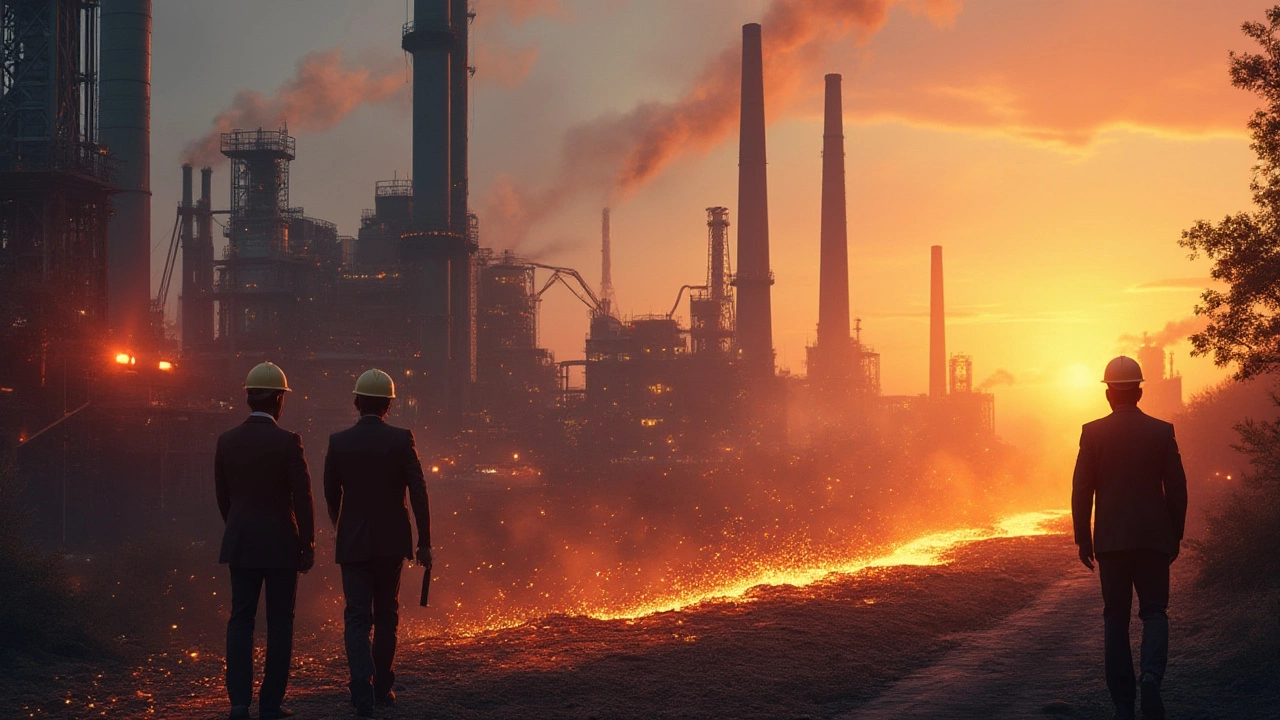- India's Super Car: The Story Behind the Fastest Machines on Indian Roads Apr 30, 2025
- Who is the King of Textiles? Apr 16, 2025
- Most Popular Car in India 2025: Which Model Leads the Roads? Oct 23, 2025
- Largest Textile City in India: Why Surat Tops the List May 4, 2025
- Food Processing Levels: The 4 Main Stages Explained May 11, 2025
American Steel Production: What’s Happening Right Now?
If you’ve ever walked past a massive steel plant or heard about Pittsburgh being the “Steel City,” you already know steel is still a big deal in the US. But many people don’t realize how fast things are changing. New tech, tighter environmental rules, and shifting demand are reshaping the industry. Below we break down where the steel is made, why it matters, and what’s coming next.
Where Steel Is Made in the US
Most of the nation’s steel still comes from a handful of hotspots. Pittsburgh, Pennsylvania, remains the historic heart of the trade – it’s where the first big steel mills rose in the 1800s and where the industry still employs thousands today. Nearby cities like Gary, Indiana, and Cleveland, Ohio, also host large integrated mills that turn iron ore into flat‑rolled sheets, beams, and rails.
In the South, places like Mobile, Alabama, and the Gulf Coast have grown fast because they’re close to raw material imports and have cheaper energy. These newer hubs use electric‑arc furnaces that melt scrap metal instead of relying on coal‑heavy blast furnaces, cutting emissions and costs. The shift to electric‑arc technology is a key trend in American steel production, allowing plants to stay competitive while meeting stricter environmental rules.
Smaller, specialty mills pop up in states such as Texas and Ohio, focusing on high‑strength alloys for the aerospace and automotive sectors. They may not produce the massive quantities of sheet steel that Pittsburgh does, but they’re critical for the high‑tech parts that power modern cars and planes.
Why Steel Matters for the American Economy
Steel isn’t just a raw material; it’s a job engine. The sector supports roughly 150,000 direct jobs and creates millions more in related services, from trucking to engineering. Those jobs often pay solid wages and offer good benefits, making steel a cornerstone of many Midwest and Southern communities.
Beyond employment, steel is a backbone for other industries. When a carmaker needs lightweight, high‑strength panels, they turn to American steel producers. When a city builds a new bridge, the steel girders usually come from the same domestic supply chain. This “Made in America” loop helps keep costs predictable and shorten delivery times.
Policy moves are also influencing the future. The government’s recent push for “Buy American” in infrastructure projects gives domestic steel a price advantage over imports. At the same time, green incentives are encouraging plants to invest in carbon‑capture tech and renewable energy, which could lower the carbon footprint of every ton of steel produced.
So, what’s next for American steel production? Expect more electric‑arc furnaces, increased recycling of scrap metal, and a tighter link between steel makers and high‑tech manufacturers. If you’re watching the market for job opportunities, investment ideas, or simply curious about where your next bike frame or skyscraper beam comes from, keep an eye on these trends. The industry may be old, but it’s far from static – and the next decade could see a cleaner, more competitive steel sector that still powers America’s growth.
Biggest Steel Supplier in the US: Market Leaders, Facts, and Industry Tips
- Aarav Sekhar
- Jul 30, 2025
Uncover the biggest steel supplier in the US, how they lead the market, and what shapes America's steel industry today. Dive into stats, facts, and tips for buyers.
